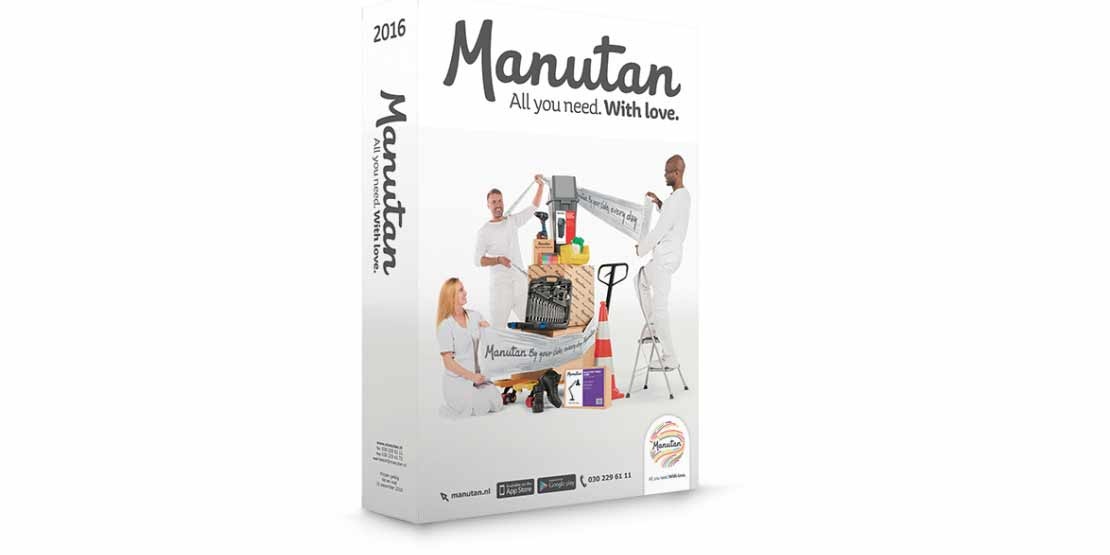As we are living in the era of the digital economy and online shopping, is there any point in still producing a paper catalogue? This is a valid question, especially if, like Manutan, you send thousands of your customers a big book packing in 2,650 pages that weighs 3 kg, five times more than a tablet! As far as our B2C colleagues are concerned, the matter already appears to have been settled. Mainstream catalogues have either disappeared or been transformed into a "promotional" aid that directs customers towards an e‑commerce site. However, the question draws mixed responses from B2B buyers: some have asked us to stop sending out the catalogue, while others want to see even more pages (our catalogue is after all modest when compared to the 5,000-page books produced by some US companies!).
Whilst I am an ardent supporter of digital technologies, I do not believe that paper catalogues are ready to be phased out. They will continue to play a key part in the purchasing process for many years to come, although their role is likely to undergo a dramatic change. I will not go into the environmental reasons that are often raised by those in favour of doing away with paper catalogues. It’s a long time since all retailers adopted environmentally-friendly production, printing and delivery methods such as recycled paper, paper sourced from sustainably-managed forests and non-toxic inks.
"The reasons why I think that paper catalogues still have a place in today's world are the different purchasing methods involved and the economic considerations"
The B2B purchasing process is more complicated than the one for B2C purchases. Several stakeholders are involved: the user who expresses the need, the buyer who chooses a supplier according to the guidelines laid down by the company's purchasing director, not to forget the accounts department who deal with the invoices and the logistics team who receive the products. Although the vast majority of suppliers place orders using electronic systems, the same does not always apply to users when choosing a product who may not necessarily have access to a computer due to their working environment (outdoors, etc.) or the company's internal policy.
"Mobile devices (tablets, smartphones, etc.) are changing the situation, but it is still going to take several years."
Additionally, catalogues undeniably play a "social" role when buyers are choosing a product. For example, when looking to buy office furniture, seeing colleagues huddled over a catalogue and deep in conversation is not an uncommon sight. The selection process is a moment for sharing and discussing, and although the order may ultimately be placed online, there can be no denying the "pleasure" in using a paper catalogue. This may be a generation-related effect, but when I see children spending hours poring over a toy catalogue, I cannot help but think that the phenomenon might just be here to stay. With many product families, the quality of the content on e-commerce sites is admittedly inferior to that of a paper catalogue. Although it may be easy to choose a pair of gloves or a plastic tray online, the same cannot be said for heavy-duty shelving and outdoor shelters, especially for B2B products, where there are few possibilities for showrooming (choosing a product in a traditional store and then buying online), this clearly benefits pure play companies. Large numbers of products spread over many different families cannot easily be seen in a store.
"Digital merchandising will undoubtedly improve in leaps and bounds with the advent of augmented reality, but there is still a long way to go."
Several strategies aimed at streamlining the purchasing process have failed, because too often users have been "forced" to choose their product using an online system with poor quality content that is not suited to the type of products on sale. We have to face the facts: paper catalogues often play an essential role in supporting digital transactions.
"I would now like to touch upon the economic arguments for keeping paper catalogues"
The advent of Google has undoubtedly provided access to an enormous number of prospects. During the first few years after the search engine's launch, the customer acquisition cost using the web was eight times lower than the cost when using printed media. However, the price for buying words on Google has continued to rise while the price for producing, printing and distributing paper media has remained fairly stable, meaning that the gap has narrowed significantly and will continue to do so.
Also, the quality of a customer acquired using printed media is "better" than a customer recruited via the web. The lifetime value is higher because the customers tend to be more loyal in the long run. I think that this is due to the fact that purchases triggered by printed media are more engaging than purchases motivated by Google.
Finally, catalogues have the advantage of positioning the brand and allowing buyers to gauge the extent of both the supplier's product range and expertise at a glance. At a time when any marketplace claims millions of items and offers the same type of product 10 times, very few companies actually spend the time to build a clear and consistent product range for customers. Those who make the effort should put it down on paper, because it truly creates value.
In conclusion, paper catalogues and electronic tools are not enemies, but allies. A combination of powerful digital tools and an appropriate relationship strategy is key to a successful B2B purchasing strategy in the 21st century. Catalogues form an essential part of the relationship-building process by providing users with a superior purchasing experience over an exclusively digital process. We believe that buyers would be wise to incorporate this approach into their strategy for streamlining the procurement process.









